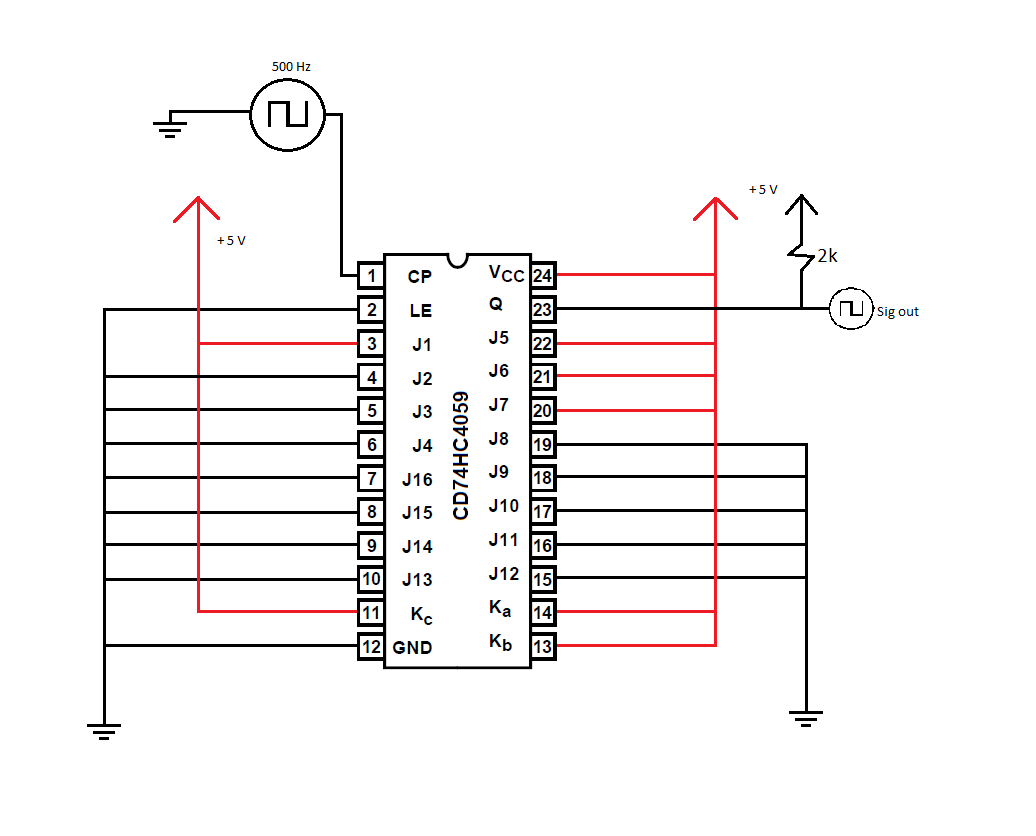Other Parts Discussed in Thread: SN74LVC1G17
Hello!
I've developed a frequency divider using the said part number based on the help of a previous thread. Though, we only discussed the J and K pins on that thread, and nothing else.
Notes:
- I am basing the configuration on the assumption that "high" refers to Vcc, and "low" refers to GND
- I currently have the device set for mode 2
- N=15, Vcc = 5V, freq_in = 500 Hz (connected to pin 1, CP) square wave
- The J and K pins are connected directly to Vcc or GND depending on the pin (no resistors are being used)
- Latch Enable (LE pin 2) is connected directly to GND
- This circuit is created on a breadboard and I am using a SOIC to DIP adapter
My Issue:
- I am not receiving any output signal with LE connected to GND
- If I connect LE to Vcc, I receive an attenuated version of the input signal (same frequency, less voltage)
- If I leave LE floating, I do not receive any output signal
Please help! I am not entirely sure what to do with the LE pin.
Thanks in advance,
Gage




